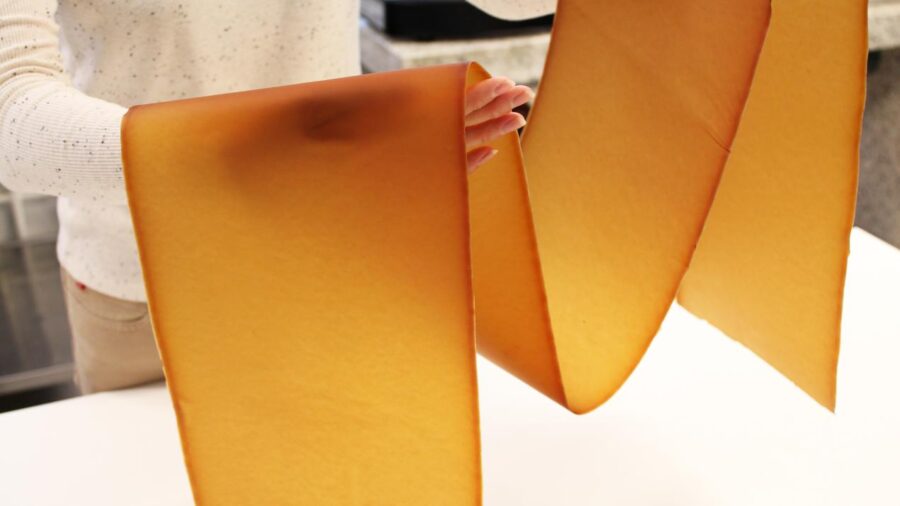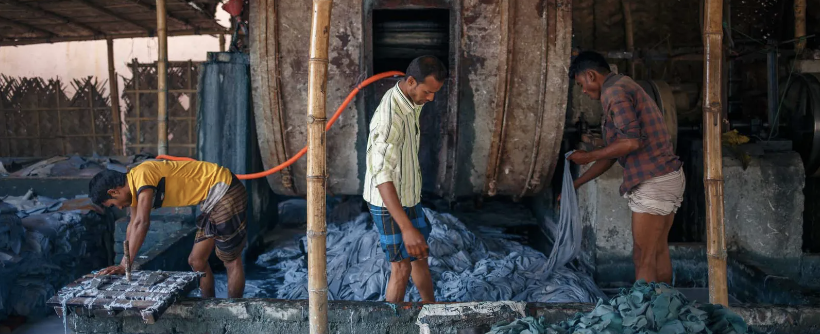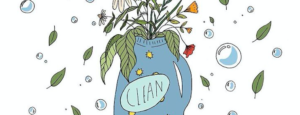Leather is a contentious topic. Vegans are vehemently against it. Some ecologists tout its longevity and balk at the idea that alternatives made from plastics are better.
Yet with this concern for the planet and animals, I don’t see many people asking about the human side of the leather industry. When I read Collective Fashion Justice’s recent report, Leather’s Impact on People, I invited Natalie LaBarbera, the nonprofit’s research and media executive, on The Peahen to give us a breakdown on ethical leather.
____
The environmental risks of leather production have been in the spotlight recently but with this report, we approached the industry from another angle, revealing how harmful leather production can be to workers, as well as to the people living near its production.
Labor rights in focus
In Leather’s Impact on People, we detail how workers across the leather supply chain receive poverty wages and can’t cover basic needs like food and housing. Yet, under these conditions, brands may still be able to advertise they are paying “legal minimum wages,” and appear like they are producing ethical leather.
This happens at luxury brands too, despite their high price tags. Case and point, a 2021 investigation into Samipell Srl, an operation on the outskirts of Florence that was conducting subcontracted work for Burberry, found that workers were paid just €3 per hour and were required to work up to 14-hour days. (Florence enforces no legal minimum wage but the average cost of living is about $1,659 per month.)
While this can be hard to read, our report also draws attention to forced labor on cattle ranches. Cases were found in Brazil, Paraguay, and Vietnam, with enslaved leather workers reporting beatings, humiliation, exploitation, forced debt cycles, and death threats. When dealing with the mental health consequences of cruel and often gruesome work, harassment and abuse of cattle ranch workers were also documented in other top-producing countries like the United States and Australia.
Neo-colonial practices cause deforestation and land violations
Human harm is rampant through all stages of leather production, and Indigenous communities are particularly susceptible to human rights infringements on their land.
We found that cattle rearing is responsible for at least 80% of deforestation in the Brazilian Amazon rainforest, endangering the land of the 24 million people who live in the area. Many people fight to defend against this neo-colonialism. But even when government agencies are in place to protect indigenous communities, natives are often forced off their land by the threat of gun violence. And sadly, while the issue of deforestation for leather is most prevalent in Brazil, it occurs elsewhere too.
Tanneries and human health risks
Other communities are subject to the leather industry’s detrimental effects through environmental racism. This occurs when people of color experience bear the brunt of health hazards and ecosystem collapse so the demands of wealthier or dominant cultures are met.
Communities surrounding tanneries in China and India, for example, are forced to deal with the ramifications of tannery pollution (heavy metals like arsenic, chromium, formaldehyde, etc.) when more developed nations chose to operate overseas to avoid environmental protection penalties. Similar effects are seen from under-regulated slaughterhouses, which send untreated waste and by-products into surrounding communities, often rendering waterways toxic.
As such, physical health risks are widely documented in these areas. In China, stories of “cancer villages” are on the rise as people who reside near waterways polluted are developing cancer at disproportionately higher rates than average. More generally, for tannery workers around the world, there is a widespread risk of several critical physical health issues like lung disease and various cancers.
Slaughterhouse workers, physical and mental health impacts
Our report also looked at the plight of slaughterhouse workers in leather supply chains. This group is at high risk due to the severe physical and mental health problems tied to the repetitive and violent nature of their work. Workers may also become seriously injured by animals kicking in efforts to escape, especially when low-quality equipment is used. Despite this, and even with modern equipment, injury is so common that in the U.S. alone the rate of amputations is two per week for slaughterhouse workers.
As for mental health risks, the act of killing predisposes people to develop perpetration-induced traumatic stress (PITS), which presents symptoms similar to PTSD including anxiety, depression, dissociation, and more. As a whole, slaughterhouse workers experience significantly higher levels of serious psychological distress than the general population. And workers who struggle with mental health are more likely to resort to negative coping mechanisms, which could deepen the negative impacts on the communities exposed to environmental health risks and racism.
What can be done?
It’s an overwhelming problem to tackle since leather is ubiquitous today. So what choices can we make to avoid harm while pushing the industry toward more ethical solutions?
When it comes to personal matters, some brands offer ‘ethical’ leather options but they should be vetted thoroughly. Conversely, shopping for high-quality vintage (not deadstock) is an option if you aren’t vegan. I also suggest sticking to more ethical, eco-friendly leather alternatives like bio-based MIRUM, cork, washable paper, mycelium, apple, orange, and cactus-based materials which help to shift the industry beyond both animal skins, and conventional fossil-fuel-derived synthetics like PU and PVC.

These decisions are especially important when considering larger purchases like cars and furniture or making business decisions (outfitting an office, for instance). But bear in mind that these, non-plastic vegan leathers are new and will require active consumer engagement and desire before brands adopt them. Tell them you want it, or you’ll go elsewhere.
Of course, not over-purchasing is vital too. As is pushing for industry and regulatory reform that will hold brands accountable for paying living wages and upholding higher human rights standards, regardless of the material. Progress on this front can be seen in New York’s Fashion Act, which requires companies to set Science Based Targets on carbon emissions and disclose more information about their supply chain’s environmental and human rights impacts. We need legislation like this in every state.
If you’re ready to make the move beyond leather or want to learn more about what a just transition away from animal-based materials could look like, browse the ‘Planet’ installment of Under Their Skin. More releases are coming this year.
Learn more about ethical leather in The Peahen’s guide.
Collective Fashion Justice is an Australian and United States-based nonprofit organization with a mission to illuminate the interlinked injustices in fashion supply chains that harm the planet, humans, and our fellow animals. It aims to work towards a ‘total ethics fashion system’ which puts the well-being of humans, our fellow animals, and the planet before profit.




